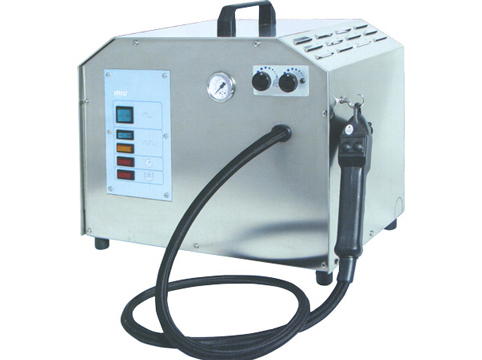Laboratory steam cleaners are specialized devices used in laboratories to sterilize and clean various equipment and surfaces using steam. They typically operate by heating water to produce high-pressure steam, which is then directed through a nozzle to effectively sanitize and remove contaminants. These cleaners are designed to meet the specific cleanliness and sterilization requirements of laboratory environments, ensuring that equipment and workspaces are free from pathogens and other unwanted substances.
Application of Laboratory steam cleaners
Sterilization of Equipment: Steam cleaners can effectively sterilize laboratory instruments such as glassware, pipettes, and surgical tools by eliminating bacteria, viruses, and other microorganisms.
Cleaning Work Surfaces: They are used to clean laboratory benches, countertops, and other surfaces to maintain a sterile environment and prevent cross-contamination.
Removing Biofilms: Steam can help break down and remove biofilms that form on surfaces in laboratories, which are often resistant to conventional cleaning methods.
Decontamination: Steam cleaners are used for decontaminating biological safety cabinets, incubators, and other equipment where contamination control is crucial.
Environmental Control: They aid in controlling the laboratory environment by reducing airborne particles and maintaining cleanliness in critical areas.
Quick and Efficient Cleaning: Steam cleaners offer a rapid and efficient method of cleaning and sterilization compared to traditional methods, saving time and ensuring thorough cleaning.

How Do They Work?
Steam cleaners heat water to produce pressurized steam, which is then directed onto surfaces through a nozzle. The steam’s heat breaks down dirt and kills bacteria, leaving surfaces spotless and sanitized.
How to Choose the Right Laboratory Steam Cleaner
1. Determine Your Cleaning Requirements
- Type of Contaminants: Identify the types of residues (e.g., oils, biohazards, chemicals) you need to clean. Some steam cleaners are better suited for specific types of debris.
- Materials to Be Cleaned: Ensure the steam cleaner is compatible with the materials of your equipment, such as glass, stainless steel, or plastic.
- Size and Quantity of Items: Consider the capacity of the steam cleaner in relation to the size and number of items you’ll be cleaning.
2. Evaluate Steam Cleaner Specifications
- Pressure and Temperature: High pressure and temperature are crucial for effective cleaning. Look for models with adjustable settings to suit various applications.
- Tank Capacity: A larger tank allows for longer cleaning sessions without frequent refills.
- Heating Time: Opt for a steam cleaner with a fast heat-up time if quick operations are required.
- Continuous Steam Function: This feature ensures uninterrupted cleaning, especially useful for large workloads.
3. Consider the Power Source
- Electrical Requirements: Ensure the steam cleaner matches the voltage and wattage available in your lab.
- Portability: Decide if you need a stationary or portable model, depending on the layout and flexibility of your lab.
4. Look for Safety Features
- Automatic Shut-Off: Protects the machine from overheating or running dry.
- Pressure Relief Valves: Prevents accidental overpressure during operation.
- Ergonomic Design: Ensures safe handling and reduces operator fatigue.
5. Assess Maintenance and Durability
- Ease of Cleaning: Models with removable tanks and accessible parts are easier to maintain.
- Material Quality: Choose a model made of durable materials like stainless steel to withstand frequent use.
- Warranty and Support: Check for warranties and availability of replacement parts and customer support.
6. Ensure Compliance with Regulations
- Verify that the steam cleaner meets relevant industry standards, such as ISO or CE certifications, for safe and effective operation in laboratory environments.